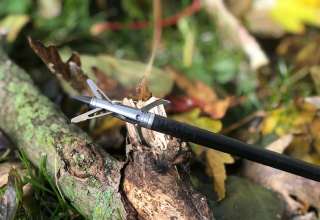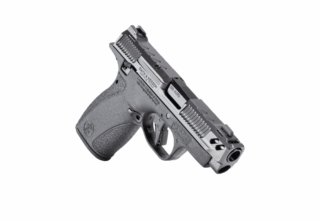Of all the moving parts of a bow and arrow outfit setting up and tuning an arrow rest is trickiest. You can leave this chore to a professional archery technician of course but I highly recommend learning to conduct this task on your own. Learning to tune your own bow saves money, but more importantly assures independence should the pro shop get swamped with work in the heat of hunting season, or your rig break down far from home during an important hunt. Setting up your own equipment also instills confidence that it is done as carefully as possible.
With that spirit in mind, let’s get started.
Before you begin always read the instructions for your rest. I’ve been setting up and tuning bows (including a couple stints in pro shops) for three decades, but still find this step helpful. Every design is unique, and I often glean time-saving advice by perusing instructions. Too, before you begin assure your arrows are properly spined for your draw length and draw weight, consulting manufacturer arrow-selection charts if unsure.
Launcher Height
The general rule is to set launcher height so a nocked arrow passes through the middle of the mounting taps/holes when viewed from the side. Nocking an arrow is important, as launcher arms are spaced differently between various models. With a drop-away rest this might require disconnecting the activation cord (limb-driven design, spring continually tensioned upward) or wedging a piece of foam beneath the launcher to hold it in the shooting position (buss-cable operated system, spring continually tensioned downward). Ballpark is fine, as nocking point will be adjusted finely for clean flight.
Center-Shot
 Center-shot refers to launcher arms positioned so a nocked arrow viewed from behind, sighting along the cam flats, rides straight behind the bowstring. In other words, during launch the arrow is pushed perfectly straight by cams and bowstring. Roughing center-shot involves exactly that: sighting along cam flats, loosening the windage adjustment bolt and moving the rest left/right until the arrow rides exactly behind the bowstring nock to point. If done carefully this is often good enough to start, but I take an extra step to assure perfection.
Center-shot refers to launcher arms positioned so a nocked arrow viewed from behind, sighting along the cam flats, rides straight behind the bowstring. In other words, during launch the arrow is pushed perfectly straight by cams and bowstring. Roughing center-shot involves exactly that: sighting along cam flats, loosening the windage adjustment bolt and moving the rest left/right until the arrow rides exactly behind the bowstring nock to point. If done carefully this is often good enough to start, but I take an extra step to assure perfection.
Attach a laser center-shot tool, nock an arrow and align the laser with the nocking point/serving center. Rotate the mechanism to assure the laser rides down the center of the shaft and through the sharp tip of a field point. At this point the rest can be adjusted no finer.
Without a laser center-shot tool, you can also center a nocked arrow by measuring from riser edge to arrow edge in front and behind the riser, adjusting windage until two equal measurements are discovered.
Correlating Nocking Point
 A simple T-square nocking-point tool is then used to assure your D-loop or nocking point is positioned properly. Generally, release aids allow a dead-zero to 1/8-inch high nocking point, while finger shooters might position nocking points up to ¼-inch high due to the added pressure of two fingers under, one over.
A simple T-square nocking-point tool is then used to assure your D-loop or nocking point is positioned properly. Generally, release aids allow a dead-zero to 1/8-inch high nocking point, while finger shooters might position nocking points up to ¼-inch high due to the added pressure of two fingers under, one over.
To fine tune use a bow vice plus bow and arrow level set, as launcher fork depth and arrow diameter can affect how precise readings are with primitive T-square tools. Place the bow in a vice and use bow level to level bow precisely. Then nock an arrow, attach the arrow level, level the arrow and mark the proper nocking-point position with silver felt pen or white correction fluid. This offers the most precise nocking point possible.
Paper Tuning
Check your work via paper tuning. This involves standing 5 to 6 feet before a taut face of newsprint or butcher paper stretched across a simple frame and stapled into place and shooting an arrow through. The tears produced provide insight into how arrows are exiting your bow. The goal is a clean bullet hole with three clean fletching cuts. Tears to the right (right-hand, reverse for left-hand shooters) indicate arrows that are under-spined or a point that’s too heavy. Correct by choosing a stiffer (or shorter) arrow, reducing draw weight, reducing point weight or adjusting launcher windage inward (toward riser). Tears to the left indicate an arrow that’s too stiff or a point that’s too light. Correct by choosing a lighter-spined (or longer) arrow, increasing point weight, increasing draw weight (when possible), or moving the launcher arms outward (away from riser). High or low tears are an indication of an improperly positioned nocking point, corrected by moving nocking point in the opposite direction of the tear; lower for high tears, higher for low. Work in small increments and patient trial-and-error fashion until clean tears result.
- Gaining an Edge With Sharp Broadheads - November 17, 2017
- Using Scents to Create Higher-Odds Bow Shots - November 7, 2017
- Fundamental Crossbow Maintenance - October 25, 2017














